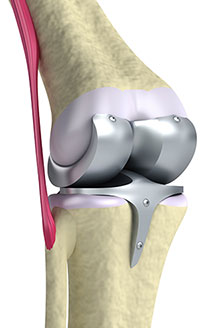Cell Instructive Materials Improve Medical Implants
 Assessing Cells Exposure to Composite Surfaces
Assessing Cells Exposure to Composite Surfaces
Materials scientists are designing novel surfaces that allow them control over cells. Composite materials where one part engenders bioactivity and the other part confers desirable characteristics (i.e., hardness, strength, etc.) are quite popular. Hydroxyapatite (HA) composite,which is analogous to bone mineral, is an example. Up to 50% of bone weight is comprised of bone mineral. Thus, HA is commonly used as a filler to replace amputated bone or as a coating to promote bone ingrowths into orthopaedic prosthetic implants. Bone forming cells such as osteoblasts or their progenitors, mesenchymal stem cells, will produce bone apposed to HA. Low voltage field emission scanning electron microscopy (SEM) is ideal for determining what, and how much, of the HA is exposed to the cells and whether there is a strong cell response.
Cell Sensing Capability Limits
The University of Glasgow Centre for Cell Engineering (CCE), in the Institute of Molecular, Cell and Systems Biology, working with the School of Engineering and other collaborators, is at the forefront of research in developing novel nano structured surfaces for stimulating the growth of mesenchymal stem cells. This will have a major impact in improving the manufacture of medical devices. As nano fabrication techniques become more advanced, the size of features can be significantly reduced. Nano features are rapidly gaining wider usage in biomaterials and tissue engineering, yet an understanding of cell response, while essential, is still nascent. Examination by SEM can be revealing. Supporting CCE’s research is the Geoanalytical Electron Microscopy and Spectroscopy centre (GEMS), in the School of Geographical and Earth Sciences (GES). ISAAC has two high-resolution field-emission SEM’s that can both operate in low vacuum. For flexibility with accurate analysis, one SEM offers an ‘environmental’ mode and the other SEM provides 3D images.
Download the Cell Intstructive Materials Improve Medical Implants case study.

